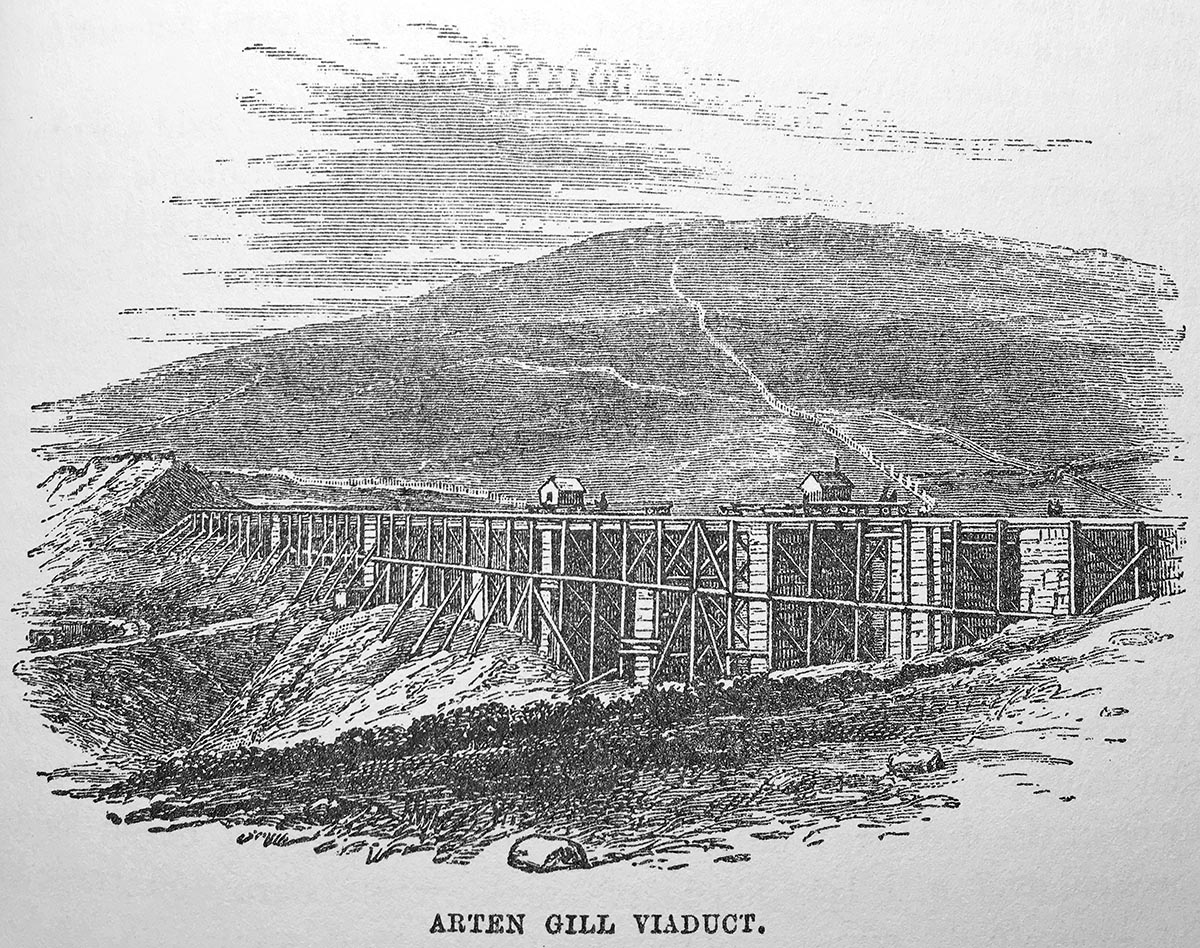Source: "The Midland railway: its rise and progress. A narrative of modern enterprise" by Frederick Smeeton Williams, published by Strahan & Co London (1876). The following selected extracts are from pages 508-511:
Arten Gill ... is deep; the banks on each side are steep; and before the viaduct was commenced there was a waterfall of 60 feet descent. The stream is spanned by a viaduct 660 feet long, of eleven arches, each of 45 feet span, and the rails are 117 feet above the water. The viaduct is built of the same sort of stone as that which, when cut and polished at Mr. Nixon's marble quarries close by, is known by the name of black or Dent marble. Great difficulty was experienced in obtaining a firm foundation for several of the piers, and then they had to be sunk in some cases as much as 55 feet. "It would be impossible," said the resident engineer, "to build piers to such a depth in loose ground like this, and to keep the sides from falling in; we therefore use strong and numerous supports; and to look down some of these foundations ready for putting in the masonry, it seems like one confused mass of timber and strutting." The foundations were, however, eventually laid on the rock, and then the lofty superstructure was reared.
The method by which the erection of such works is carried on in the case of these high viaducts, is indicated by our engraving. A light timber stage, called a "gantry," is constructed on each side of the work, sufficiently wide to allow of the piers and abutments being built between. A jenny, or crane, is then placed on a movable platform extending from one stage to the other. The materials are wound up either by hand or steam power, and are then moved slowly along till they can be lowered to the exact position they are to occupy. As soon as the masonry is built up to the height of the gantry, a fresh lift of timber is put on, the crane is raised to the new height, and so the work is continued to another stage. By these means stones of great size can be used: one in this viaduct measures fourteen feet by six feet, is a foot thick, and weighs more than eight tons; and the total amount for this work alone was upwards of 50,000 tons.

